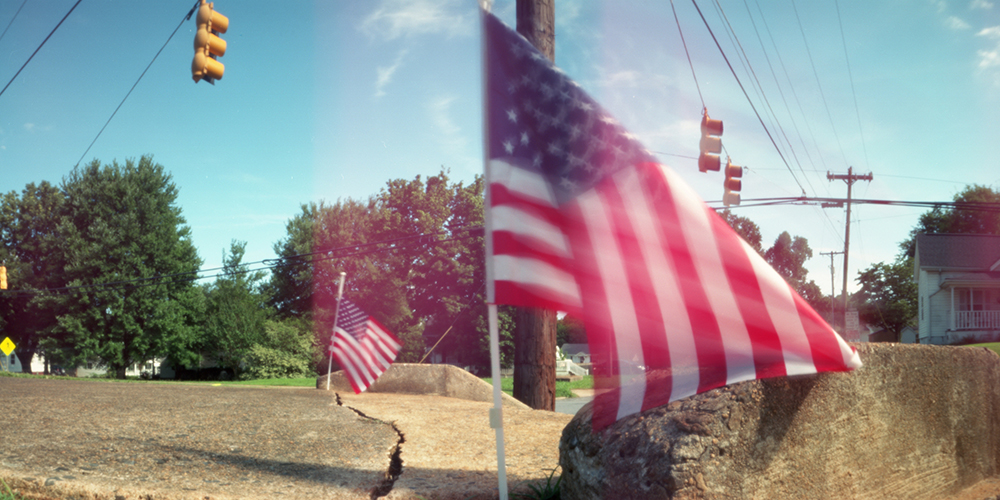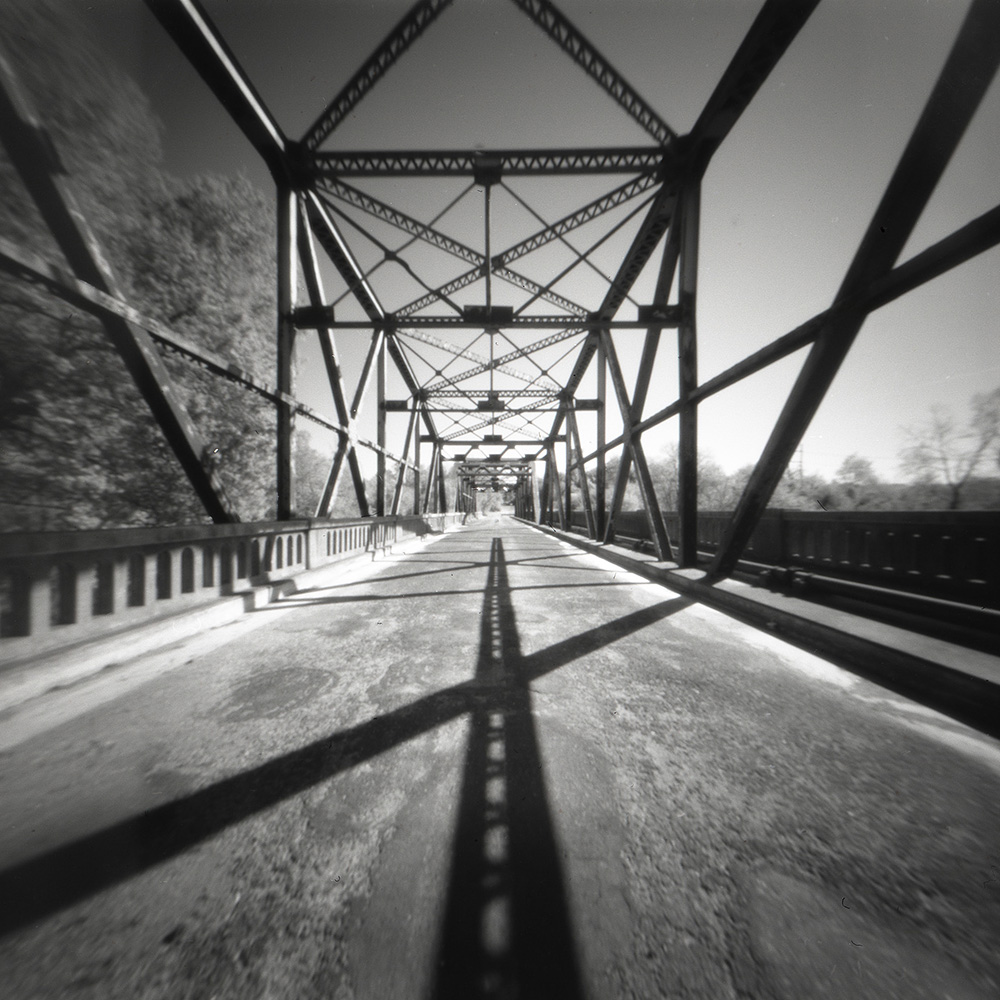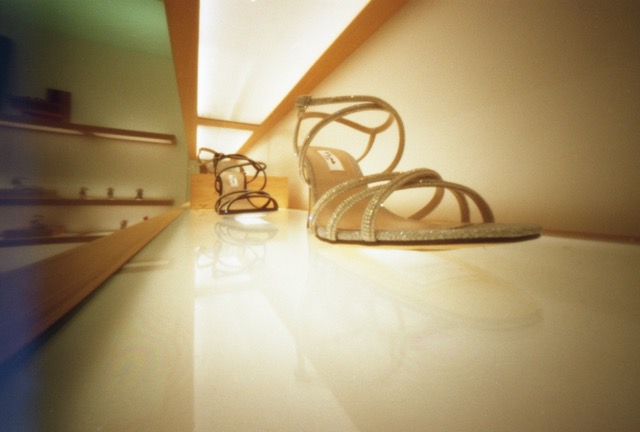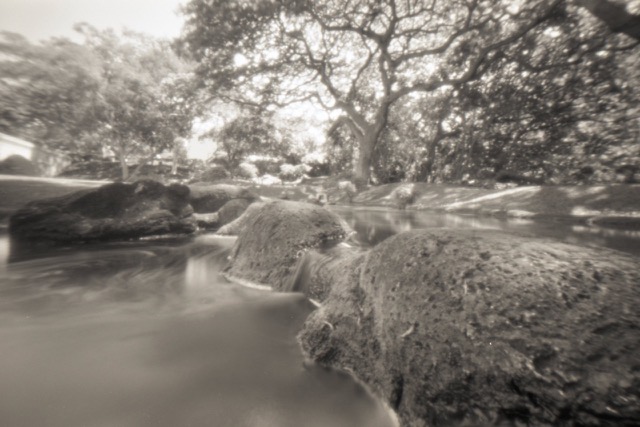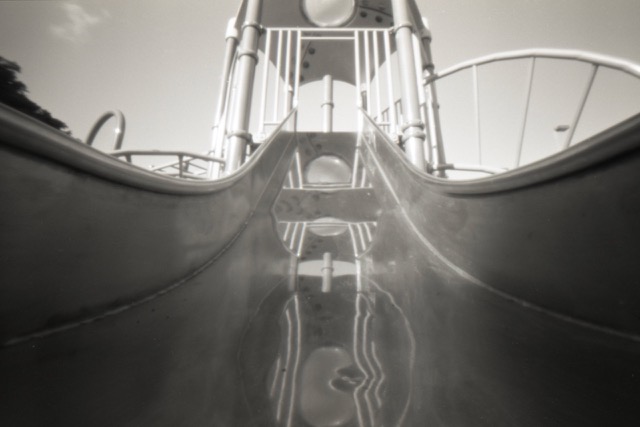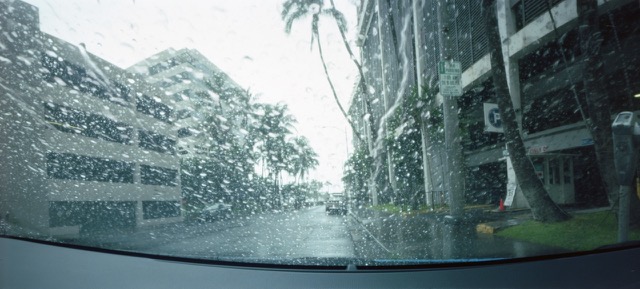We can now ship again to U.S customers. The cost of the Trump tariff which has to be pre-paid before shipping is now automatically added to the total.
Spot-light #8 – Robert Strahinjić
Hi Robert, can you tell us a bit about yourself why you shoot pinhole?
There are moments that cannot be measured in seconds. Moments that stretch, as if time itself is holding its breath. For me, pinhole photography is a way to capture those moments. No lens, no autofocus, no rush, just a small hole letting light pass through. In a world where speed has become a measure of worth, pinhole photography is a quiet act of resistance.
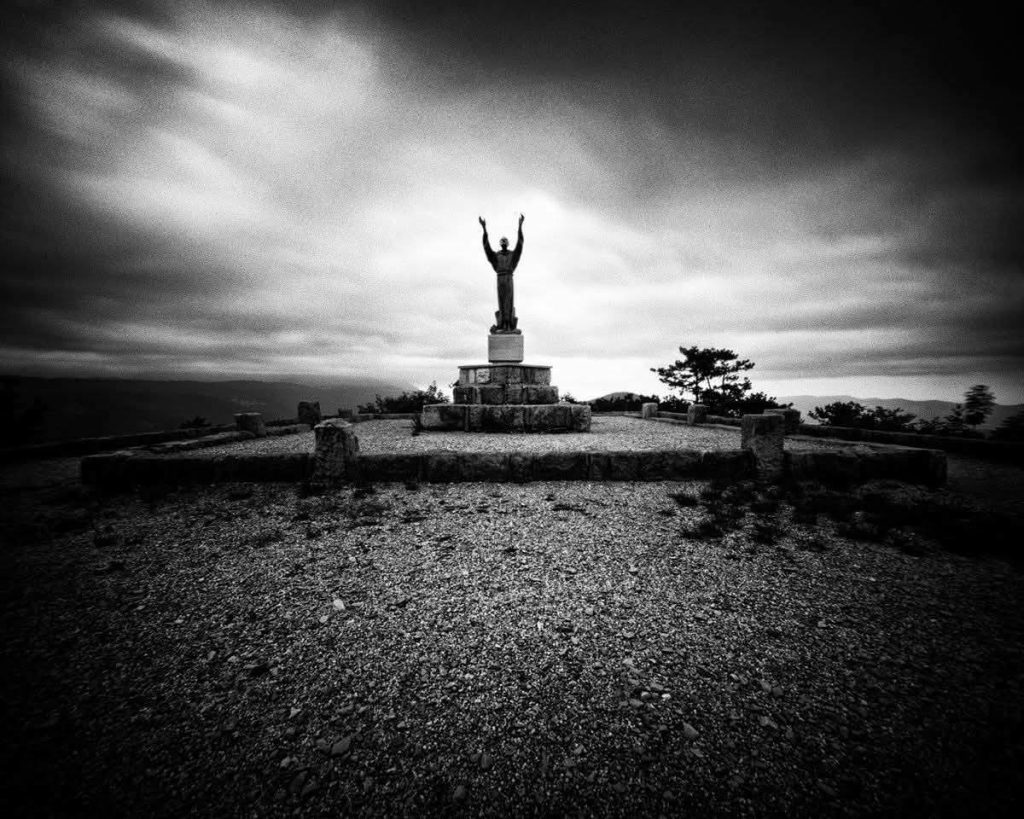
My love for photography began in my early twenties, during the last years of the analog era. My first camera, a German Beirette, was a gift from my father. That moment sparked a creative fire in me, a desire to express, to create.
Soon after, I embraced the digital wave, which was booming at the time. Even today, most of my work is done with a digital camera. I started with landscape photography, it offered a way to escape the chaos of everyday life and reconnect with peace. Later, when I joined a photography club, I began to explore other genres: drone photography, street photography, portraits, and visual storytelling, mostly in black and white, which remains closest to my heart
now.
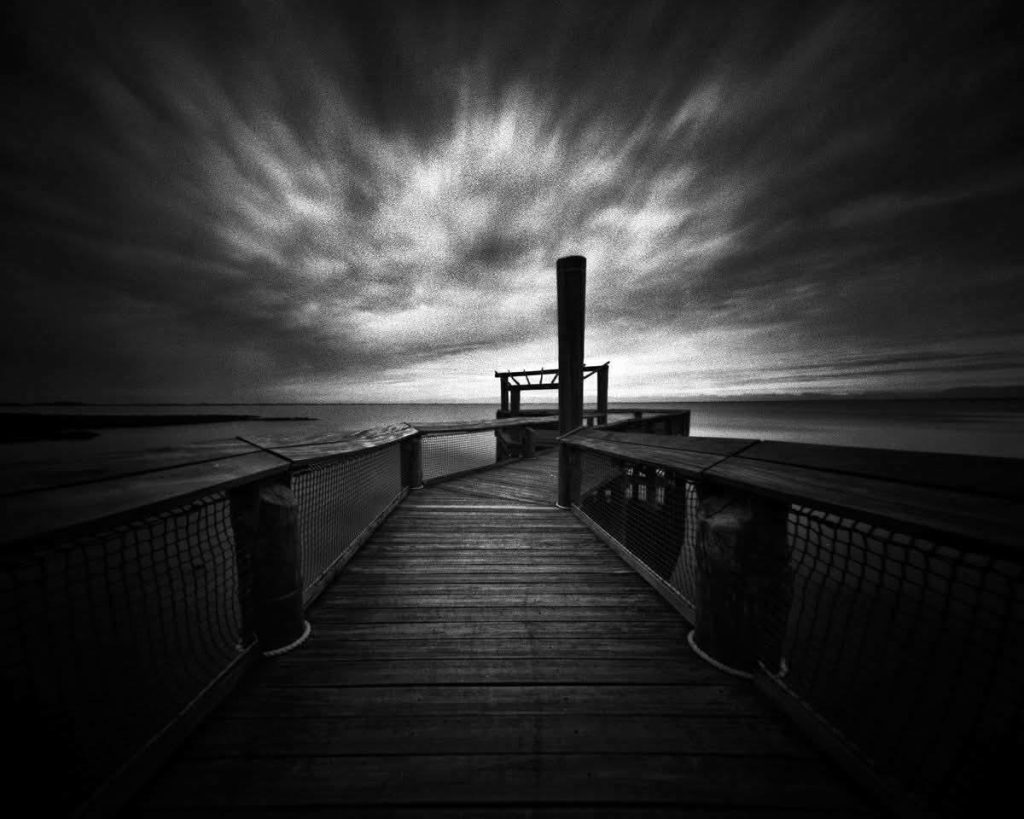
In the back of my mind analog photography never truly left me also because some members in our photographic club still made analog photos. Two years ago, the passion returned. This time with the gift of a few vintage Praktica models, followed by my purchase of three classic 6×6 cameras: a Lubitel, a Holga, and an Rolleiflex from the year 1951. Then in 2024 during a Pinhole Day workshop something clicked, and that initial spark turned into a burning passion.
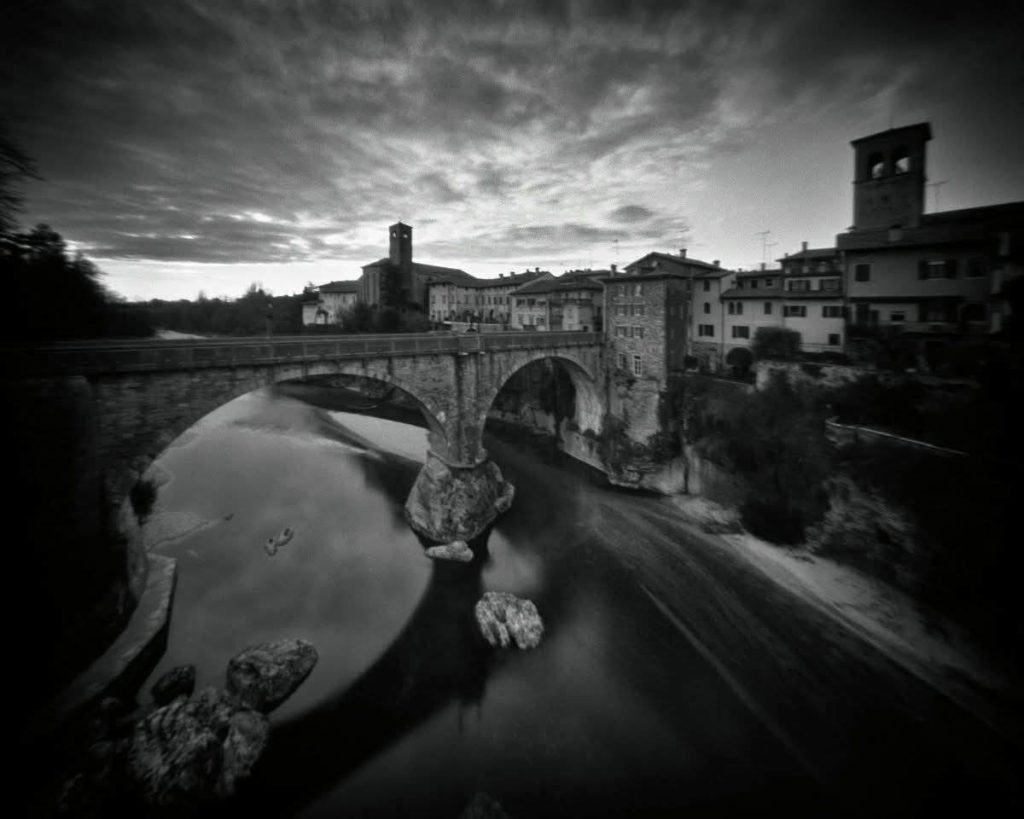
I was first introduced to pinhole photography about 13 years ago by Marko Vogrič, now the president of our photography club Skupina 75. Marko is working with pinhole photography for over 20 years and is well known in Italy for his series “Miška po svetu” (“Little Mouse Around the World”). For years, he encouraged us to build pinhole cameras from cardboard and wooden boxes or modified old cameras and photographing on photographic paper or film during annual Pinhole Day workshops.
As I said in the year 2024 something clicked and I decided to take pinhole photography more seriously, exploring it through a hybrid approach: analog shooting combined with digital darkroom techniques. This blend of old and new has opened up completely new creative directions for me.
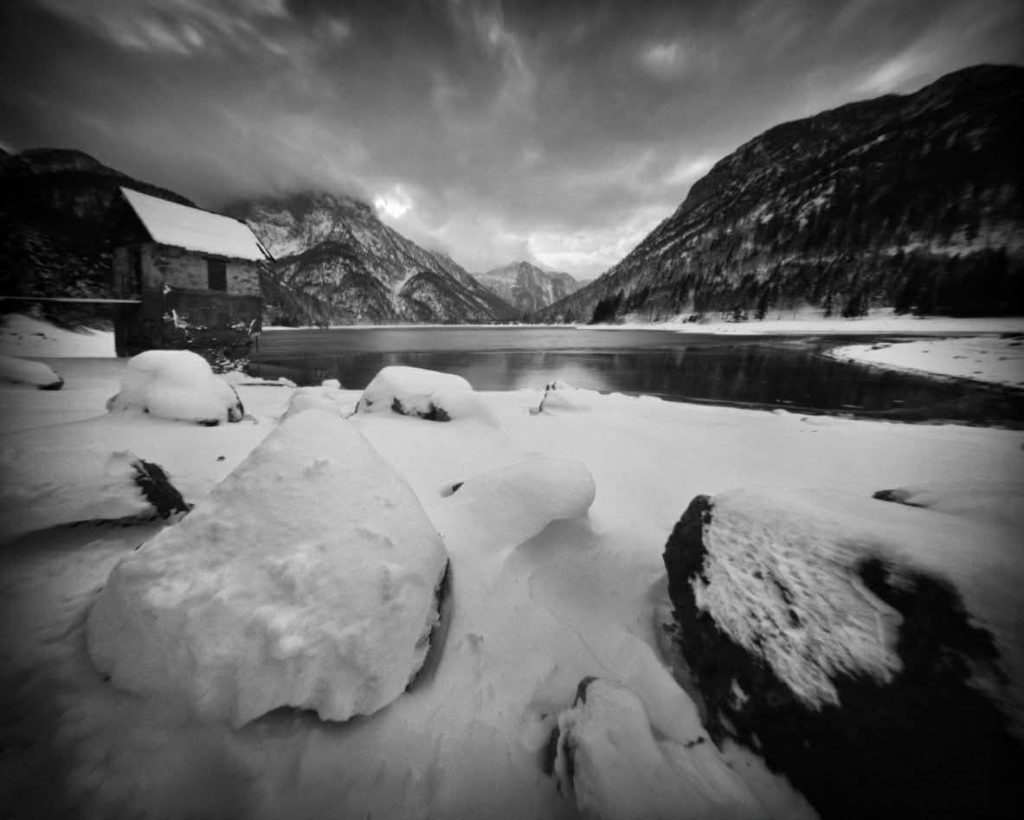
By profession, I’m an accountant, a job that can be very stressful. Photography, quite literally, saves me. Especially now pinhole photography. Because pinhole is not just a method, it’s a way of being. It teaches us that slowness can be beautiful, that imperfection can be pure, and that sometimes the smallest opening leads to the largest door.
Thank you Marko very much for showing me the door and encouraging me to walk through into the quiet, meditative world of pinhole photography.

Can you tell us about your landscape photography? Where do you shoot?
What film stocks do you prefer?
My approach to landscape photography is deeply intuitive. Before I even set up the camera, I already have the final image visualized in my mind. Working with a pinhole camera (also digital cameras), this kind of previsualization is essential for me—every decision matters, and nothing is left to chance.
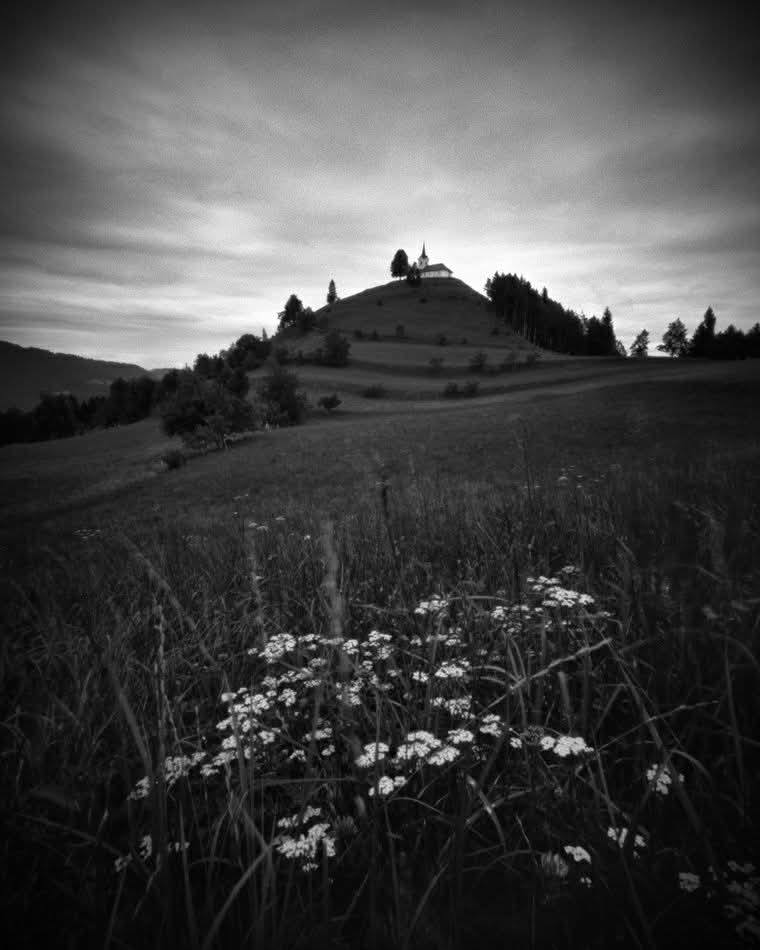
With pinhole camera I shoot my landscapes under overcast skies, as I’m drawn to quiet, dramatic moods and soft, diffused light. I often work early in the morning or late in the afternoon, when the sun is low and cloud textures become more pronounced. This is also very important for me when the sky is not cloudy. On very cloudy days I can work all day. These conditions allow for longer exposures, which enhance atmosphere and bring movement into the stillness, especially in the sky and on water surfaces. On windy days also on trees and grass what makes the motif even more dynamic.
My subjects include both well-known and undiscovered locations, but I’m especially drawn to scenes with water, rivers, lakes, ponds, even the sea. Water calms me, much like the mountains do. I haven’t fully explored mountainous landscapes with my pinhole camera yet, but I plan to, those scenes inspire me deeply and i know that time will come also for pinhole mountain landscapes.
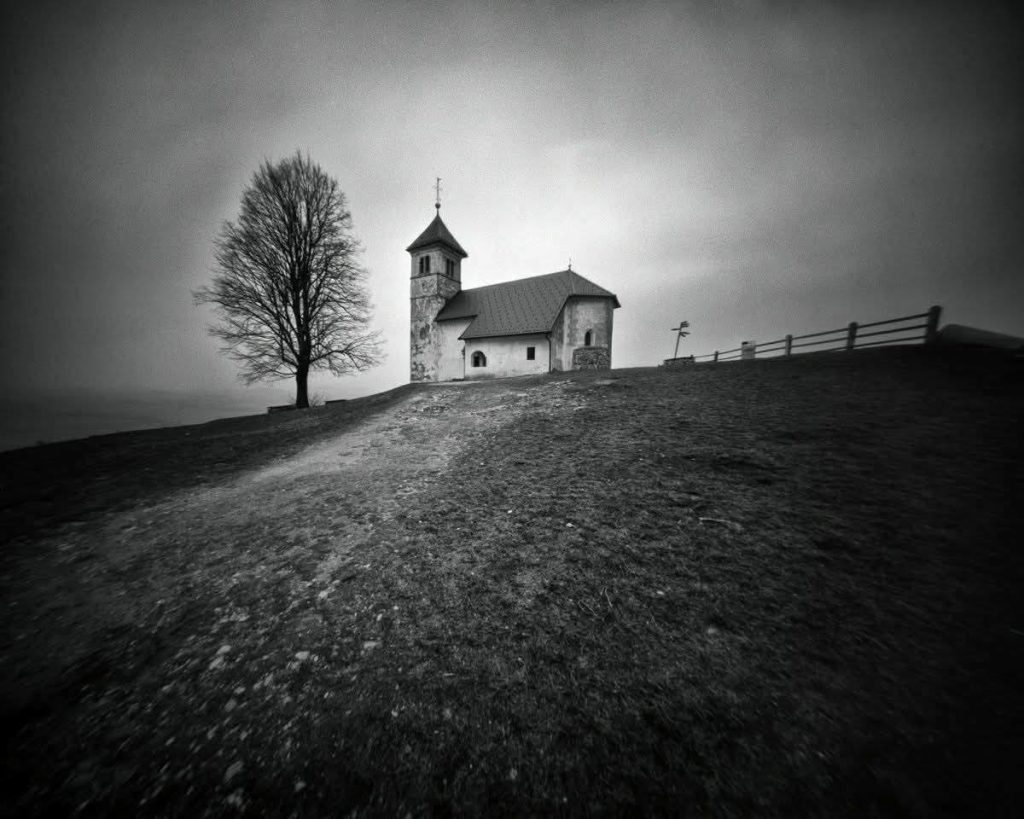
For now, I’m captivated by small ponds, quiet lakes, and solitary chapels nestled in the landscape, places where nature and silence create something sacred. I don’t chase postcard perfection, I wait for authentic moments that carry emotion. In my pinhole photography, I work with black and white film, as it aligns best with the moody, atmospheric quality I seek in my images.
My go-to choice is Fomapan 100—it handles long exposures beautifully, delivers a wide tonal range, and produces a slightly raw, classic look that complements the minimalist nature of pinhole work.

Do you post-process to get this moody dark look to your images?
Since my final output is a fine art digital print in the carbon technique, I do use a digital darkroom to complete the vision I began in the field. But the process starts much earlier, before any editing.
The visual mood is something I’m already aiming for when I shoot. I always look for soft, diffused light and overcast conditions to naturally create a calm, darker atmosphere.
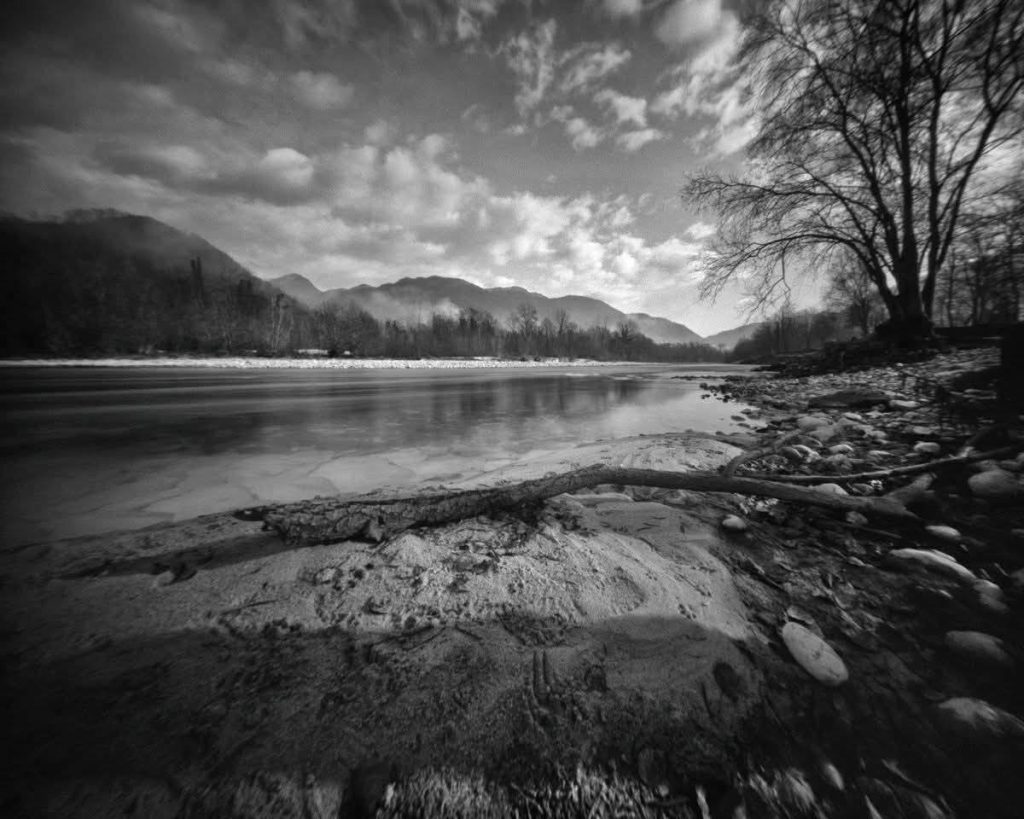
When exposure times exceed one second and in my case always does, I manually adjust the reciprocity failure compensation. Instead of strictly following the values calculated by phone apps, I reduce the exposure time based on my own field experience. This often results in slightly darker exposures, which I then refine also digitally if needed.
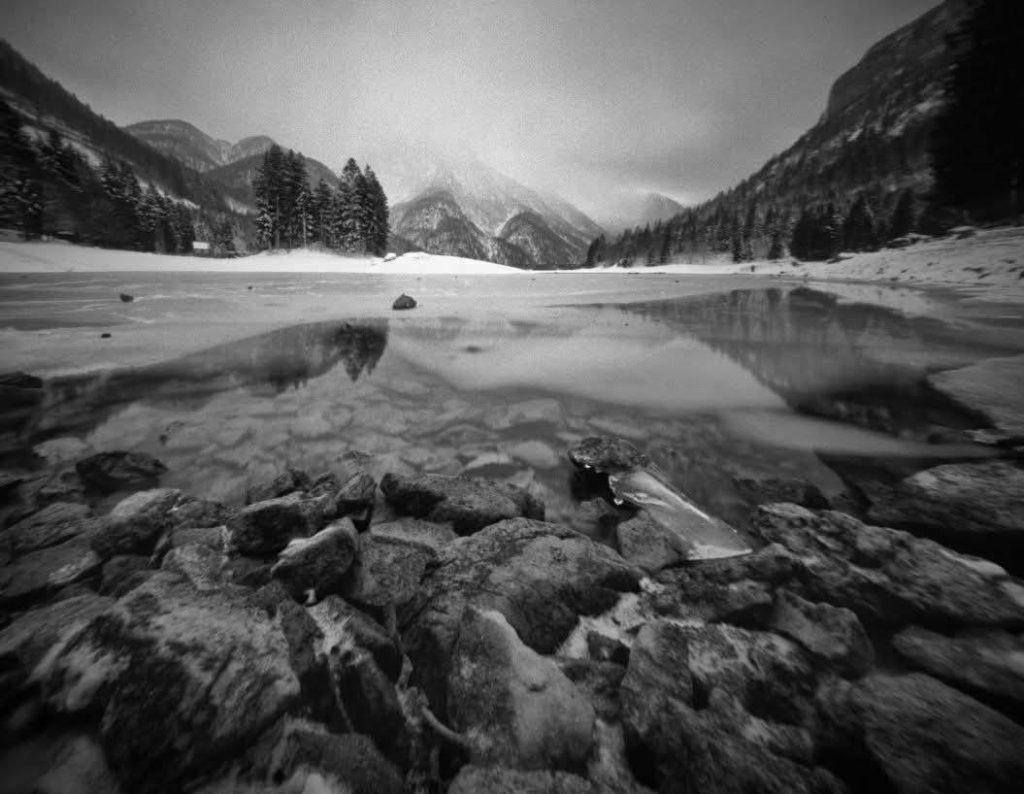
So, the final image is really a combination of everything: pinhole camera on film, carefully chosen light conditions, deliberate field technique, and yes also subtle work in the digital darkroom. All these steps are part of the same vision, to create images that reflect a quiet, contemplative mood.
I’m not interested in working fully in analog from start to finish, but I respect those who do.

You used the RSS 4x5z to shoot these photos. Why did you choose this
camera? Do you use filters when shooting?
About a year ago, I decided to invest in a more serious, professional 4×5 pinhole camera. At the time, I was already using a multiformat camera for 120 film, but I wanted to move to a larger format, mainly to have more flexibility when cropping without losing image quality, especially if I needed to produce larger prints.
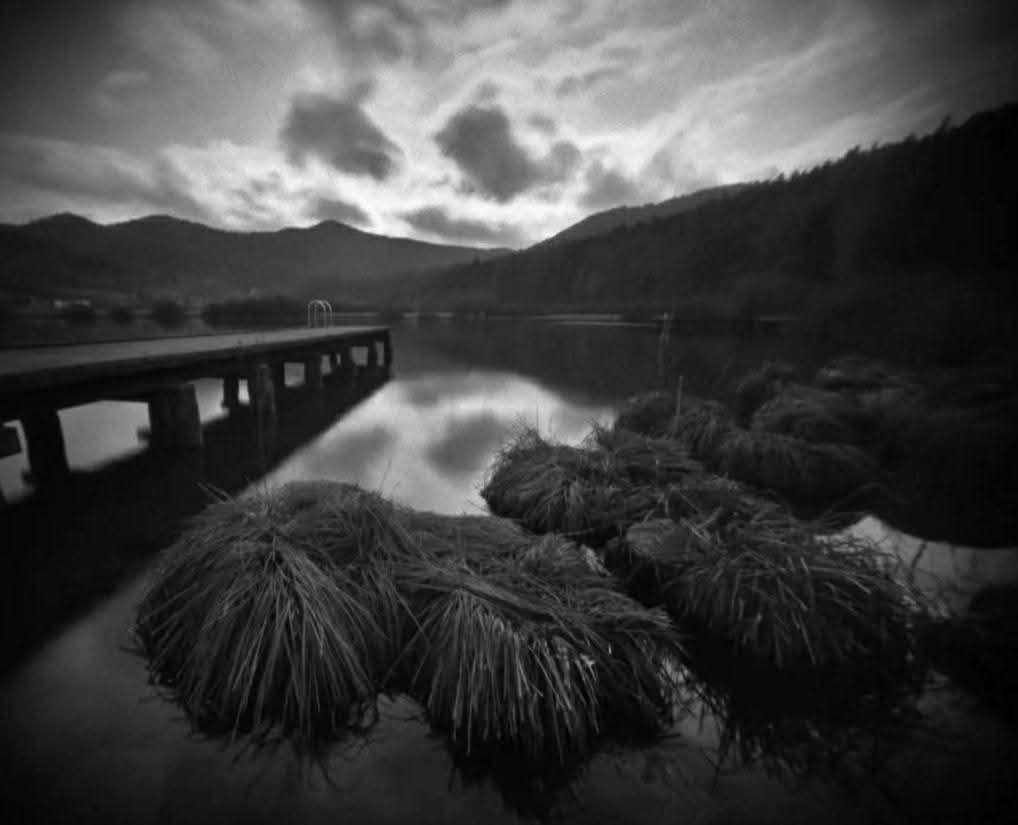
Another important feature I was looking for was the ability to use multiple focal lengths with a single camera. This approach is both more practical when shooting on location and more cost-effective, as it essentially gives me four cameras in one. While researching what was available on the market, I found several options, but two of the
brands I was also interested in were no longer available. RealitySoSubtle 4x5Z was the only one still being produced, and it immediately appealed to me – both in terms of its design and its price, which is excellent considering what the camera offers. I’ve now been using it for a year and I’m very satisfied – it’s been an outstanding purchase.
As for filters, I don’t use any at the moment, though I’m considering getting an ND filter to further extend exposure times in certain conditions. I don’t feel the need for other types of filters because I also make use of a digital darkroom in my process before fine art carbon printing. Well, we’ll see what the future brings, maybe I’ll give some others a try as well.
Thanks for taking the time to write and share your work!
You can find Robert’s work on instagram @robertstrahinjic
And on facebook.
Shipping to the U.S suspended.
Since the 25th August 2025 there is no shipping available to U.S customers. We are waiting on a mechanism to be put in place so that the newly introduced tariffs can be paid. Hopefully shipping to the U.S will be back online soon.
Holidays
We’re on holidays until the 3rd of August.
Camera orders are possible and shipping dates shown are accurate. Pinhole orders have been disabled until the 3rd.
Thanks for your understanding!
New 6×12 and 6×17’s
New 6×12 and 6×17 curved film plane panoramic cameras now available to order. The cameras are upgraded from the previous models to include a 3rd central pinhole and 84mm (Cokin P) filter mount. Ergonomics have also been improved – loading is much easier due to the removeable insert.
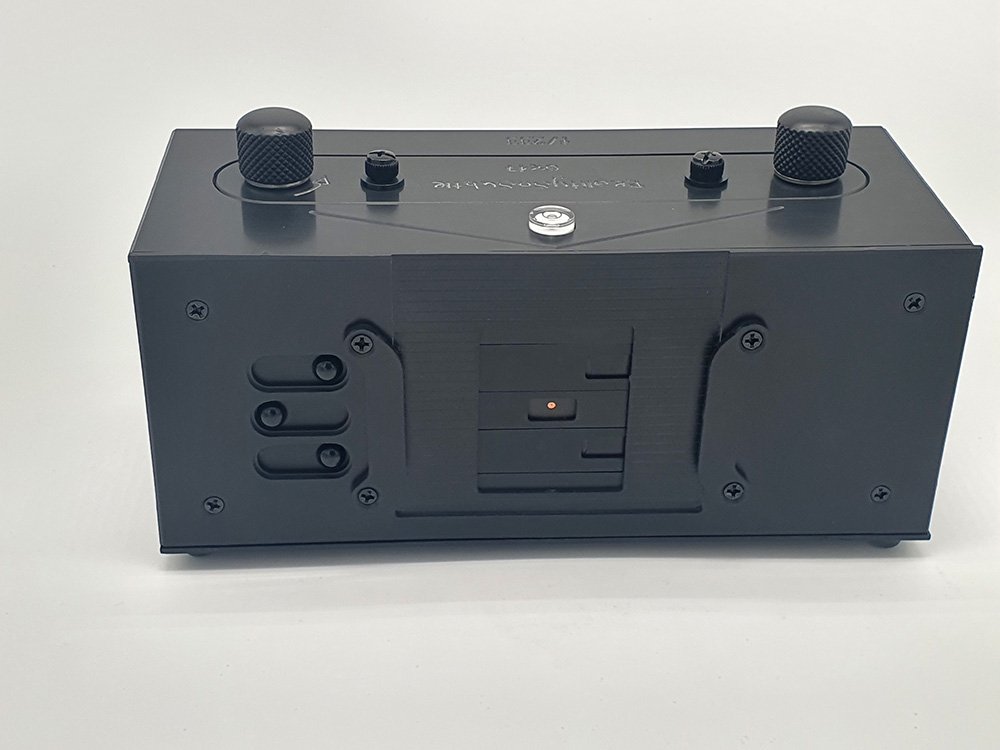


Spotlight #7 – Mark McCreary II
Mark lives in Hawaii and shoots the RSS6x12, 6×6 , 6x6F and 35R. He shares his thoughts and images on his pinhole photography.
Hi Mark, can you tell us why you shoot pinhole rather than regular
lensed photos?
It probably sounds silly, but I like the challenge of pinhole over regular lensed photos. The first time I saw a well made pinhole photo I was floored by how a lensless camera could take such an interesting photograph. I try to use a mental preview to imagine what the camera will give me. Of course, sometimes I am wrong or surprised by the results which is fun to me. I also like how I can take long exposures to change an aspect of the scene.
I feel that trying pinhole photography is an excellent learning experience for a photography journey. It has taught me a lot about reciprocity and even the mechanics of photography, that has improved all my photography. A mentor I found online years ago greatly encouraged me to make my own pinhole. They sent me brass shims and some basic plans to make my own pinhole. Because I didn’t have access to more than an electric rotary tool, glue and some screwdrivers, I decided to hack apart a Holga 120N camera I had lying around and made a camera with some basic research. After learning from my mistakes, I tried again with a RealitySoSubtle professionally laser premade pinhole. All that research taught me what made a good pinhole for my needs. I also learned about exposure circles, patience and a bit of camera design math. That camera didn’t survive a move across my country, but the experience was worth it.
Can you tell us about your pinhole photography? What do you look for?
What formats do you like? What film stocks do you prefer?
I don’t know what I can tell you about my photography except that I have been all over the place with my own journey. Since discovering pinhole photography about fourteen years ago, it has been narrowing down to my primary motivator and tool when making photographs. I used to look for movement like waterfalls because it seems like a go to thing in pinhole. Now I use pinhole like I would nearly any camera. I take it on holidays, to birthday parties, shopping, hikes, and even work. Lately I have been experimenting with leaving my camera incognito to capture people interacting in a scene. Their blurred forms leave them anonymous. If I do manage to catch a detailed face, I won’t share. I’m uncomfortable in front of the camera myself unless I am being a blur.
As for format, I really like medium format. Most pinhole cameras seem to be 6×6, but when possible I gravitate towards rectangular formats like 6×4,5, 6×9, 6×12 and so forth. My ideal camera would a 6×4,5 that is more easy to use landscape than portrait. I have tried 135/35mm, but I prefer the resolution of medium format, but the RSS35R has shown me there is potential in 35mm. I have wanted to try large format like 5×7 or 8×10, but it is a huge leap in materials to process and share my results.
As for film stock, color is so much fun to use. I was a big fan of Kodak Ektar or Portra and even had a phase of E6 slide film like Velvia 50 before the prices were too much for my every day budget. I started developing my own B&W around 5 years ago and that really helps me keep going. To remain budget friendly I use a lot of Fomapan 100 & Kentmere 100 film, but when I have a little extra money, I like Ilford FP4 Plus, Delta 100 and Acros II.
You use the RSS 6×12 , RSS 6×6, 6x6F and RSS35R to shoot these photos. Can
you talk a little about your experience with these cameras. Do you use
filters when shooting? Do you have a favourite
photo and why?
Yes, the RSS 6×12 and 6x6F were favorites of mine that have had accidents in the field (think falling hard on lava rock), but I would like to replace them sometime. The curve plane and offset pinholes of the 6×12 made for a lot of interesting results. I did try some infrared filter photography with the 6x6F, but I don’t remember using too many filters otherwise. Spots on a filter are more dramatic on a pinhole exposure than a lensed camera in my experience. I am still learning the RSS35R and how best to use it.
So far it is a nice pocket camera for my workbag and gives the minimalist feel. I would say a camera not mentioned but in high use is my RSS6x6. With two pinholes and narrow profile, it has found itself in my camera bag or sling often. I usually set it up for indoor photography with some easy reciprocity film like Acros to photography my time at the library, museums, and restaurants.
Do I have a favorite photograph? Isn’t that like asking someone if they have a favorite child? The other photos might get jealous.
RealitySoSubtle 6×12 with Ektar 100 on a rainy World Wide Pinhole Day. I like how the dash, rain drops and the street are all in equal focus. I was trying to fill my time waiting for a break in the rain.
RealitySoSubtle 6×12 with Delta 100. A cheesy water based picture, but I love it nothing the less. I like the light, the pier and the gentle blur of the surf. I live on an island and water is everywhere.
Thanks Mark! You can find more of Mark’s work on instagram here: @threeeyedmonster

